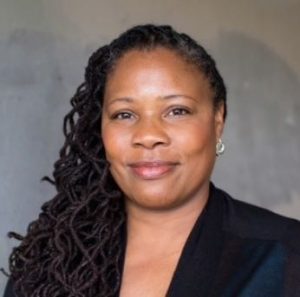Leaders Help Shape the Path

By Zaretta Hammond, Teacher, Educator, Author of Culturally Responsive Teaching and The Brain
There’s a quote that says, “For things to change, somebody somewhere has to start acting differently.” The operative word in this quote is “act.” To become a culturally responsive school district, school board members and district leaders need to be the catalyst to get people to do new things. They have to get change to go viral. That means they have to “shape the path” — script the critical mindsets and moves of their district that show people the new behaviors and ways of interacting. District leaders have to lead the way by offering real counter-narratives to deficit thinking rather than platitudes. We are all leaders in helping create more responsive schools for traditionally underserved students. Some define leadership as taking responsibility for what matters within your circle of influence. The task, then, is to get people to be leaders at every level of the system to interrupt practices that invalidate the knowledge and assets that diverse students bring to school.
For example, imagine this scenario. A Native student enters kindergarten with rich oral language skills rooted in his home language. That means his phonemic awareness (the language sounds we speak and hear) is rooted in sounds that may be very different from the sounds we associate with traditional sounds of ABCs. There are two possible responses – affirm and validate the language students come with and build on it or invalidate it by seeing it as a problem and discouraging the student from using this knowledge to build his phonemic awareness in English.
The solution seems easy. Of course, go with the validating stance you might say. But that’s not what is happening currently as Native children and other diverse students begin school. When we ignore and invalidate the assets diverse students bring, we set them up to become disengaged early in their academic career and slow their learning. So, at the district level, the message has to be communicated that “we value students’ home language and use it to build literacy” and because “having a second language is a superpower.” That’s a counter-narrative to the dominant belief that having a mother tongue other than English is a problem. Leaders have to articulate strong counter-narratives that clear the way for everyone at each level to be more responsive. When you understand change management, you can use the principles of adaptive change to get people be more culturally responsive organically. Here are few ways to do that:
Create Instructional Norms
Too often, as school district leaders we want to create policies. Remember policies have to be coupled with instructional norms, not just content standards. Instructional norms are different from offering strategies. It means that you articulate core practices, like what we do when children come to school speaking their home language. Then get people at every level to embrace those norms.
Tweak the Environment
When the conditions in our environment change, our behavior usually changes as well. Think about the conditions that allow the desired behaviors and mindsets to take hold and blossom. Then motivate people to cultivate them.
Make Responsiveness Habitual
We want teachers to be more culturally responsive. So, think about the processes or protocols that can be put in place to positively trigger the desired behaviors from teachers on the frontlines. When behavior is habitual, it reduces our natural resistance to doing new things because it doesn’t tax our mental effort.
# # #
The views expressed here are the writer’s and are not necessarily endorsed by the Association of Alaska School Boards. AASB welcomes diverse perspectives and civil discourse. To submit a Guest Column for consideration, see our Guest Column Guidelines and email your 400-1000 word submission HERE.
